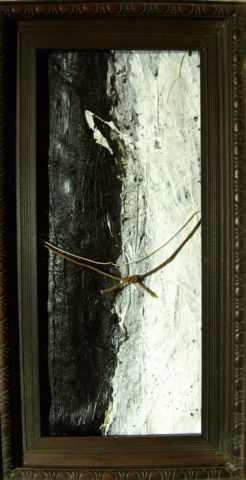Part 2
In response to your comments:
Rob – Hi Jane, Interesting that you point out that thought is not art until something transforms it or manifests itself in another form. If this form is produced by industrially, or folk with other skills that’s OK isn’t it? I have had things manufactured and installed without my hands ever touching them. I thought about the ideas for them, drew them out with specifications so other people could make them. I made decisions and modifications to them and worried about them along the way. No less art for that process.
Absolutely. Not only are your intentions to make art for the right reasons, but the process of producing community based art means you are being commissioned for your artistic talents and abilities in creative planning. The fact that you have had works produced by others simply underscores the cooperative nature of what you are engaged in. Nowhere near to Jeff Koons – sorry Nicola.
The question of thought not being art until something transforms it or it manifests itself is a bigger issue – and I’m thinking here of the conceptual artists like Kosuth, Bergin etc. The idea that thinking, experiencing, perceiving can be an end result is a compelling idea. I have been fascinated by my own interaction with my senses and thoughts my whole life but I am the only one who can know what I’ve experienced. So is that art if I alone am moved by what I’ve experienced? In no way am I saying it isn’t valid, but I question where the boundaries are placed between communication and unique perception, art and experience, the very experience of being alive; is it receptive or is it emanation or is it per force, both?
The point I’m trying to illustrate is not the particular questions arising around any given concept, but rather, the importance of asking questions and not just following along because an idea may be popular.
David Riley – Is recording an ‘attempt to communicate’? I explore. I record a highly individual impression of what I find. I review the recording and use what I find to select what to do next. Quite often I am surprised by what I have recorded. Surprising myself keeps the research fresh and encourages further exploration. I record what I find for me, less I forget. Am I attempting to communicate with myself? Probably……
And this: ‘Can a work of art really be connected to the artist when the artist hasn’t made it or perhaps even touched it?’….. Absolutely….. As a simple example, no maker can a ever touch a movie (not in the sense meant in this statement) and yet no one would ever consider saying a movie is unconnected with its makers (technicians, actors, director, producer, etc.)…….. I declare a vested interest. More and more I become a virtual artist. My work is physically untouched by any hand, let alone my own. But, it is very much of my mind and made manifest through the virtual-world….. Occasionally a piece will be transposed from the virtual-world for presentation in the physical-world, where it becomes a different work with a life of its own.
I agree completely. When I work with digital photography I deal with the same issues. An artist that creates a film has made that film. A process which is by nature a non-hands process is not really in question. Again, I trust your intention as an artist because your engagement/progress/exploration is evident.
David Minton – Art is a product of mind, There is no duality of mind and body, There is no disconnect between maker and object, There are different kinds of object?
True, but then art must be a product of mind and body if there is no duality of mind and body. The very question of that ‘disconnect’, perhaps ‘ownership’ or ‘authorship’ is more to the point, was explored through appropriated works. It is a poignant question and one whose boundaries are not clear. Can copies/appropriations have two makers? Is one maker as valid as the other? Is originality necessary anymore for the creation of art? The questions are endless…
